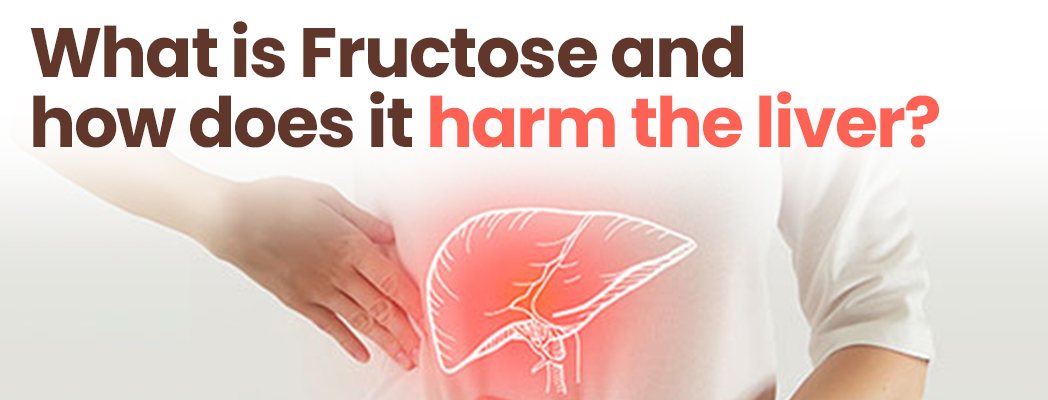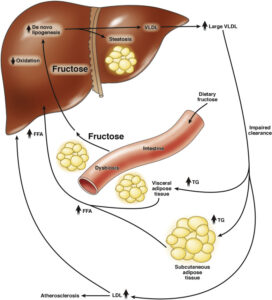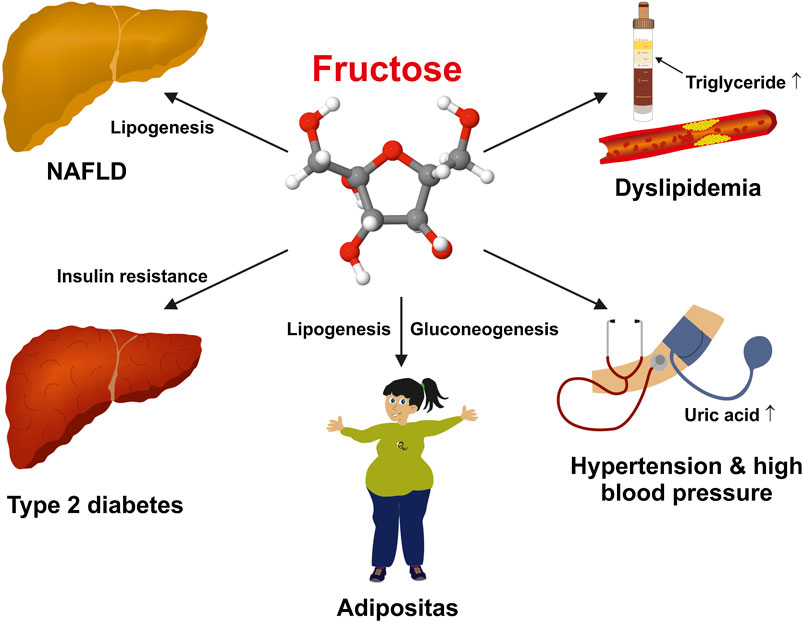Fructose is a form of sugar found in fruits, vegetables, and honey. A major source of fructose is high fructose corn syrup (HFCS). This is an inexpensive substitute for cane sugar that is used to sweeten a variety of foods, including soda, candy, baked goods, and cereals. Regular cane sugar consists of sucrose which is broken down in the body to glucose and fructose.
Fructose And Liver Disease


What is fructose?
How much is our fructose intake?
Fructose was once a minor part of our diet. Fifty years ago, our average diet had about 15 grams of fructose a day, most of it from eating fruits and vegetables. Today our intake is four or five times that amount, almost all of it from the refined sugars and HFCS used to make breakfast cereals, pastries, sodas, fruit drinks, and other sweet foods and beverages. Overall industrial consumption of fructose has increased 100-fold over the last century.
How is fructose intake related to health?
Studies have shown that excessive consumption, particularly sweet drinks, are linked to fatty liver disease, obesity, diabetes and heart disease.
How is fructose metabolized by the body?
After one consumes food or a beverage containing fructose, the gut helps breakdown the fructose before it reaches the liver. Small amounts of Fructose (less than 50 grams a day) can be easily metabolised by the gut. However, the consumption of too much fructose, particularly in a short period of time, can overwhelm the gut, causing fructose to “spill over” into the liver. Excessive fructose is toxic to the liver. When large quantities of fructose reach the liver, the liver uses excess fructose to create fat, a process called lipogenesis.
How does fructose lead to liver disease?
Eventually, people who consume too much fructose can develop fatty liver disease, a condition in which too much fat is stored in the liver cells. Fatty liver disease can lead to liver inflammation and liver damage, resulting in a more aggressive disease called steatohepatitis that can progress to scarring of the liver (cirrhosis), liver cancer, and liver failure. It has also been shown that high fructose diets also lead to deterioration of the intestinal barrier thus allowing bacteria and toxins from leaking into the bloodstream. These absorbed toxins pass through the liver and aggravate inflammation in the liver.
It has been shown that people with fatty liver disease are more likely to have build-ups of cholesterol-filled plaque in their arteries. They are also more likely to develop cardiovascular disease or die from it. In fact, people with fatty liver disease are far more likely to die of heart disease than liver disease.

What are the other harmful effects of fructose on the body?
Excessive fructose intake also leads to
• Elevated triglycerides (type of fat)
• Increased LDL (so-called bad cholesterol)
• Build-up of fat around organs (visceral fat)
• Increased blood pressure
• Insulin-resistance, a precursor to diabetes
• Increased production of free radicals, that can damage DNA and cells, a potential for development of cancer

It has been shown that people who consume higher amounts of fructose are also more likely to smoke, drink alcohol, have a higher BMI, and are less physically active. Therefore, high fructose intake correlates to a generally unhealthy lifestyle pattern.
If you have any questions please fell free to contact with us.
